We’re going to show you how to make a double fold quilt binding on a sewing machine. If you’re like us, we’re always eager to get our quilt finished at this point, so this is our favourite way to get this final step done quickly while making sure it still looks perfect.
Apart from the quilt itself, you’ll need a few basic things. We’re going to use this 80wt thread called DecoBob to stitch the binding. It’s a very fine thread with a matte finish, so it will hide in the fabric and make the stitching less obvious. It’s also a very strong thread despite its size, so this is a great option for piecing and stitching anything down securely.

You’ll also need a cutting mat with a rotary cutter and quilting ruler to cut your binding accurately. An iron is needed to give your binding strips a quick press. We’ll also need a disappearing marking pen or a piece of fabric chalk.
Most importantly, you’ll need the fabric you want to bind your quilt with. We’ll show you how to cut and sew it together. Most patterns will tell you how much fabric you need for a binding, however if you’re doing your own quilt, you’ll have to do some math to figure out how much you need. There is an excellent binding calculator provided by Quilter’s Paradise. Alternatively, you can use the following formula to calculate how much you’ll need.
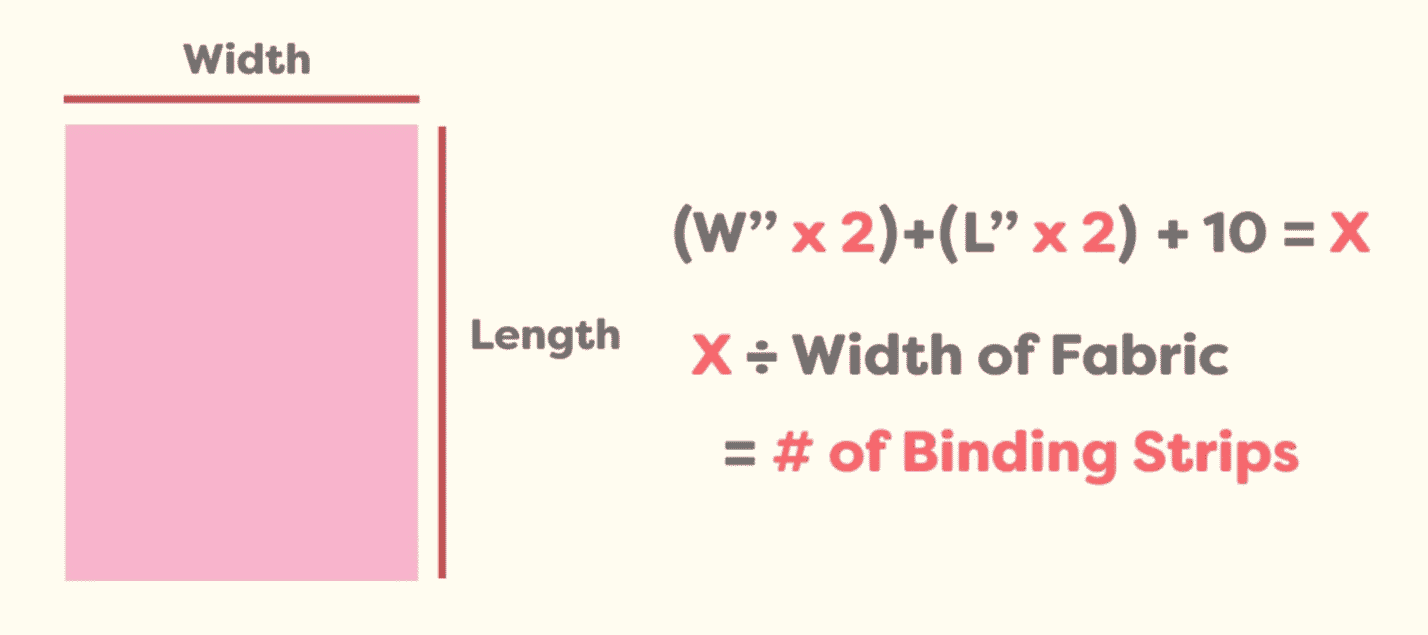
Take the width of your quilt multiplied by two and add it with the length of your quilt multiplied by two to get the circumference of your quilt. Then add another ten inches to be on the safe side so you don’t run out of binding. Take this number and divide it by the width of your fabric to find out the number of strips you need to cut to complete your binding.
So for example, we might have a 20 inch by 30 inch quilt. The width of our binding fabric is 43 inches, and we want the binding to be 2 and a half inches wide.
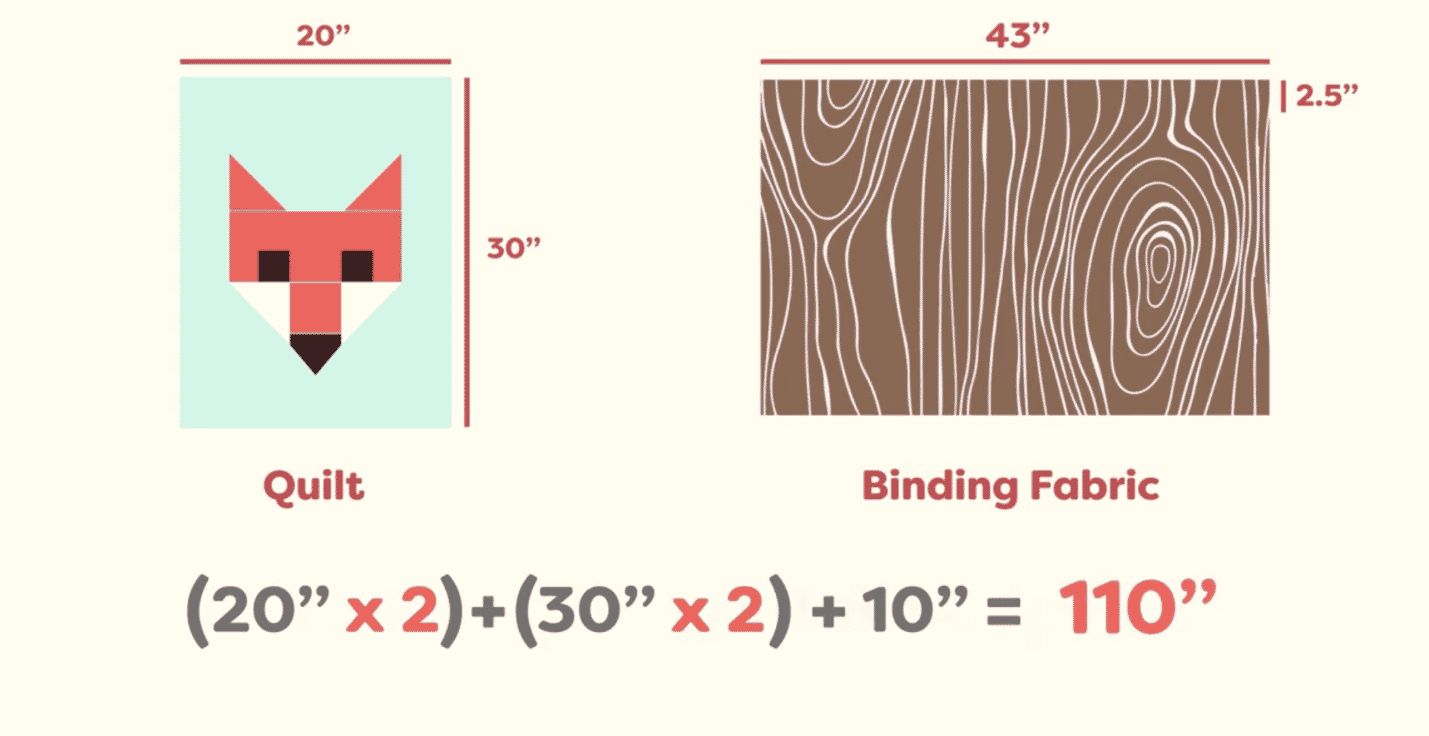
20 inches times two, plus 30 inches times two, plus an extra 10 inches to be safe, equals 110 inches. We’ll take the 110 inches and divide that by the width of fabric, which is 43 inches, to get 2.6 strips of binding required. We can round this up to 3 strips to make it easier.
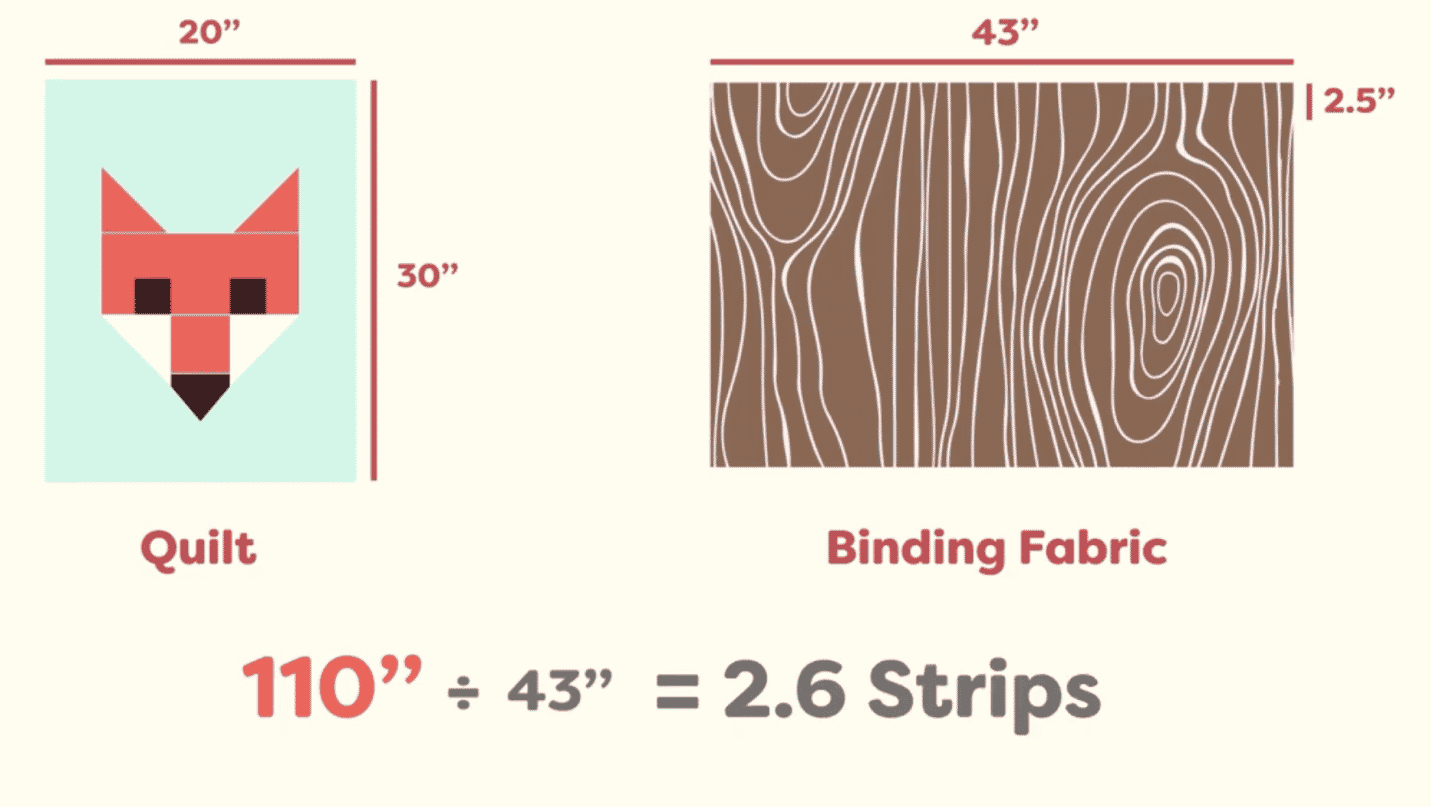
Knowing this, we want to cut 3 strips along my width of fabric that are 2 and a half inches wide each to have enough binding for the quilt.
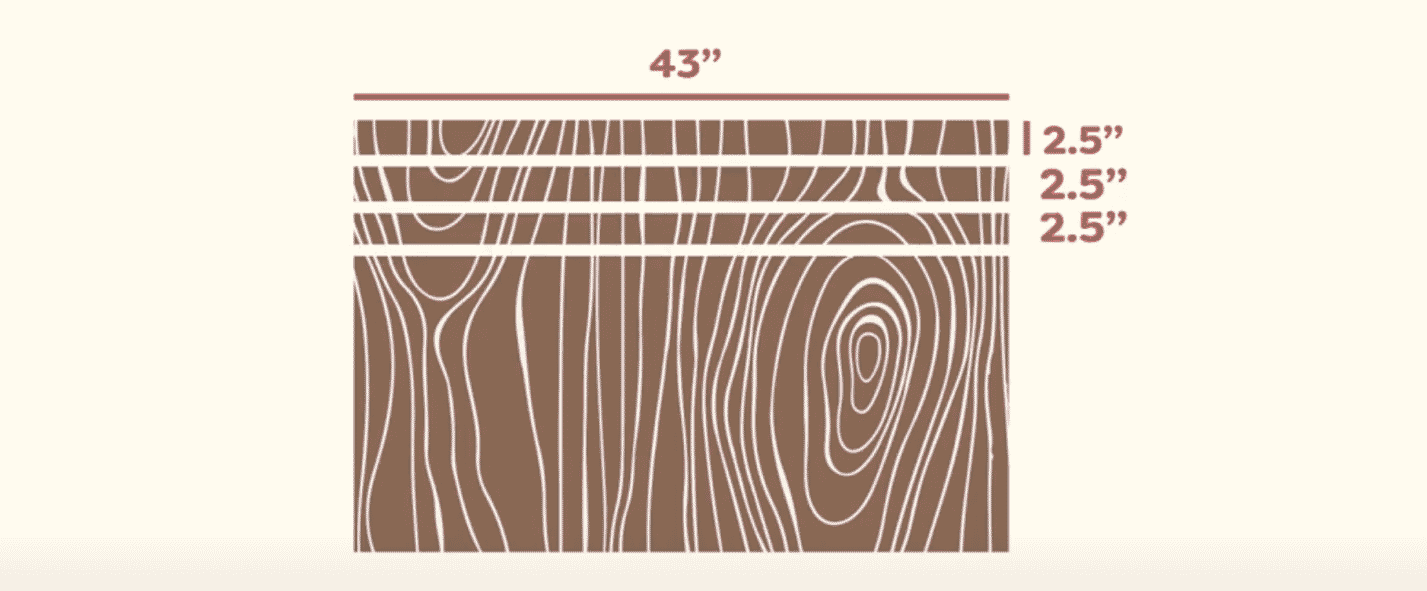
Now that we know how much fabric we need, we’ve gone and cut the strips to the measurements required. Next we need to sew these strips together into one long binding. To do that, we need to trim both ends of the strip to a 45 degree angle, which can be measured on the quilting ruler. Make sure they’re both trimmed facing the same direction.
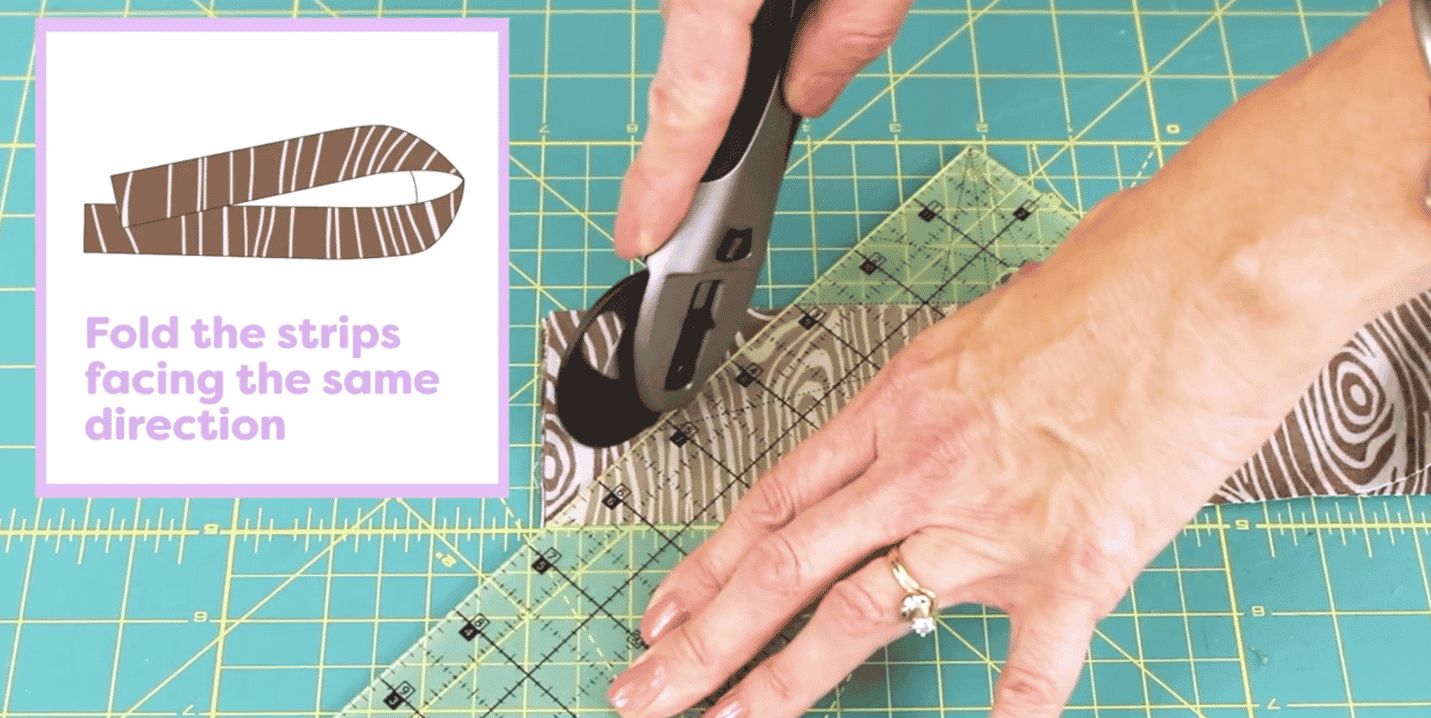

Take the ends of two different strips and place them right sides together, diagonal ends matched up, and pin them together. However, if you line up the corners perfectly and are using a quarter in seam allowance, you will notice that the pieces will end up a quarter inch off.
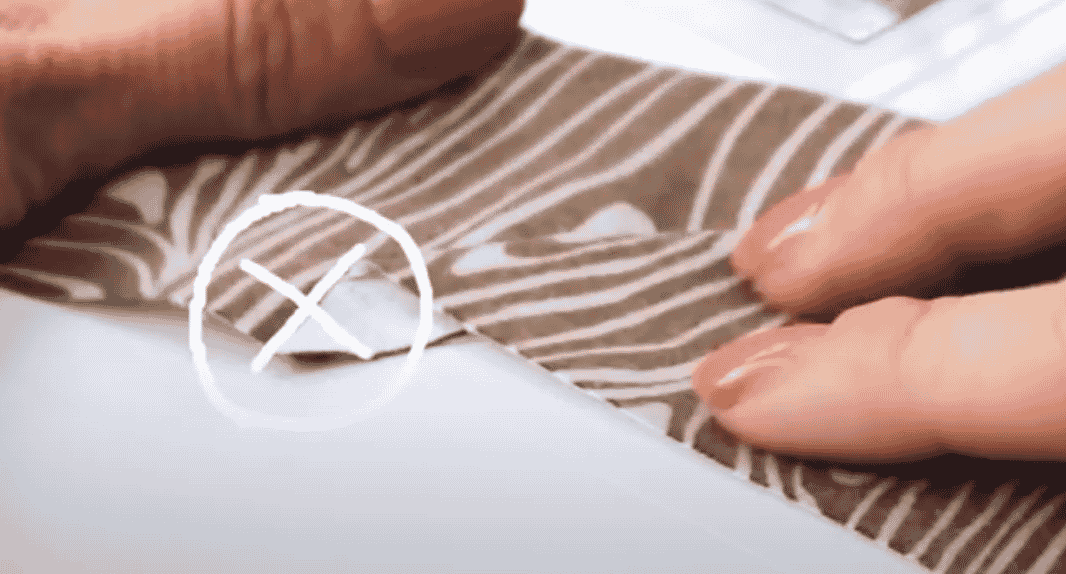
So you will need to offset the pieces by a quarter inch when you pin them together so that after it’s sewn, your pieces will line up perfectly.

Because the thread we’re using is so fine, we’ll set the stitch length to 1.80. Using a ¼” seam allowance, sew the pieces together.
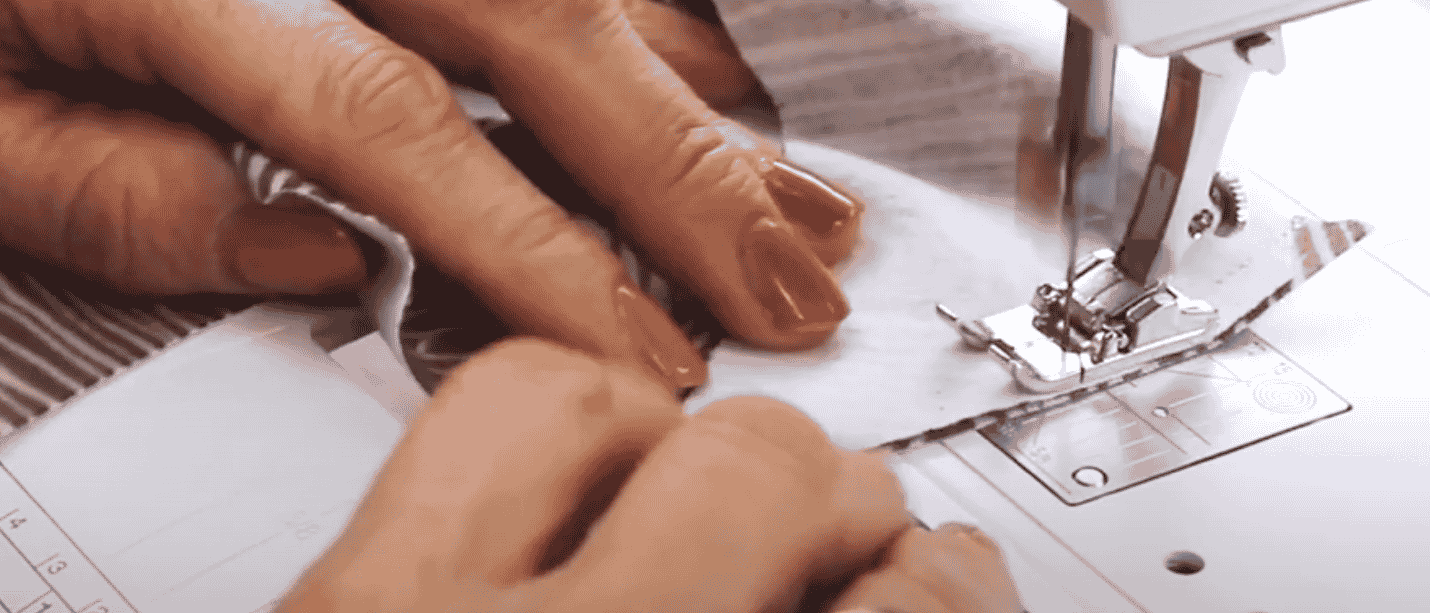
Do this for the rest of your strips until all the pieces are sewn into one long strip.

You can leave the end of the last strip squared off.

Turn the binding strips wrong sides together and press to crease it together, creating the double fold binding. However if you feel confident and don’t want to spend time pre-creasing your binding, you can fold it by hand as you sew along.
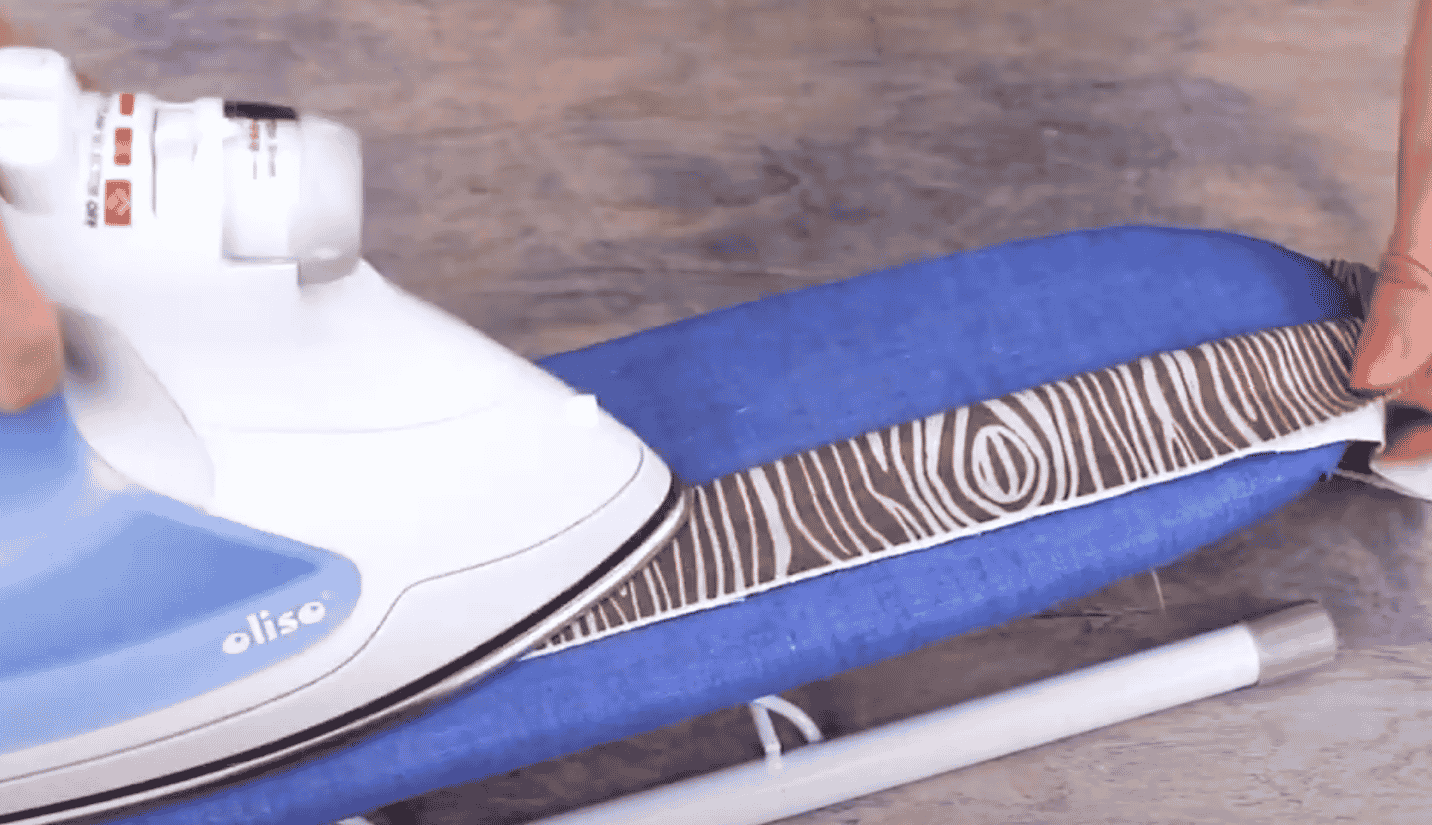
Now we’re going to open the binding up on one end and fold it over into a diagonal line so the touching edges are straight. Press the fold to create a crease. We’re now ready to start sewing it on!
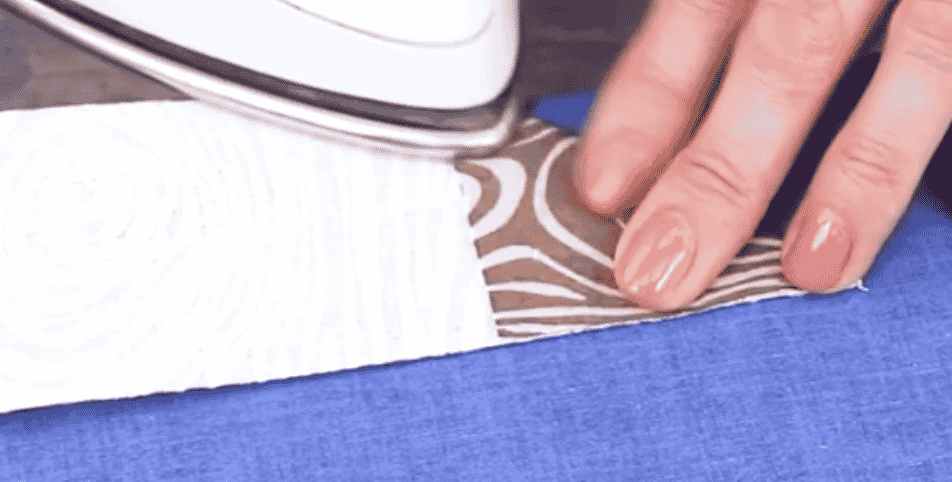
We’re going to start by stitching down the end that has the diagonally folded edge. Lay the binding out completely open on the back side of the quilt, starting with the end you made the diagonal fold. We prefer to position it around the middle of the quilt on one of the long sides.
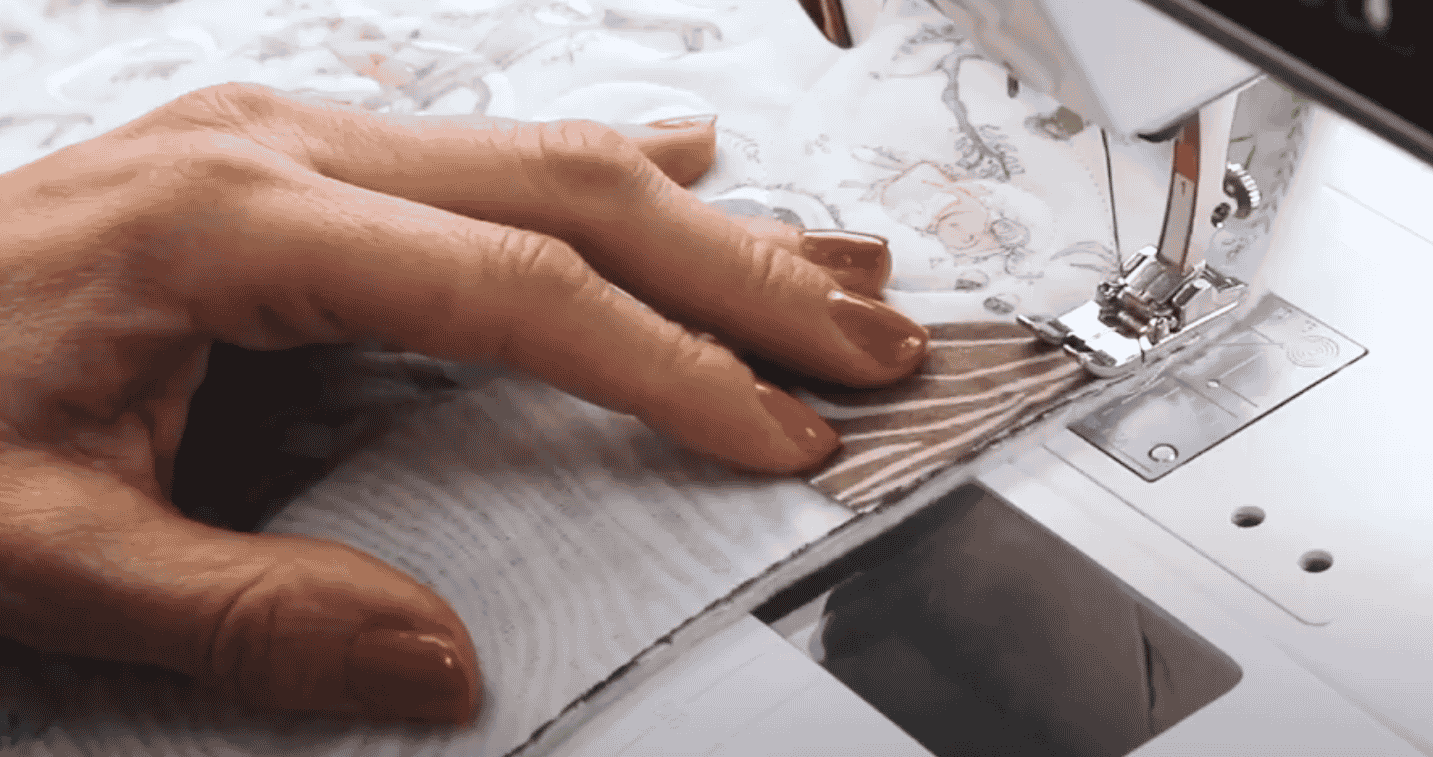
Match the edge of the binding with the edge of the quilt. Stitch it on a ¼” seam allowance using your walking foot and sew to a little bit after the raw edge of the fabric.
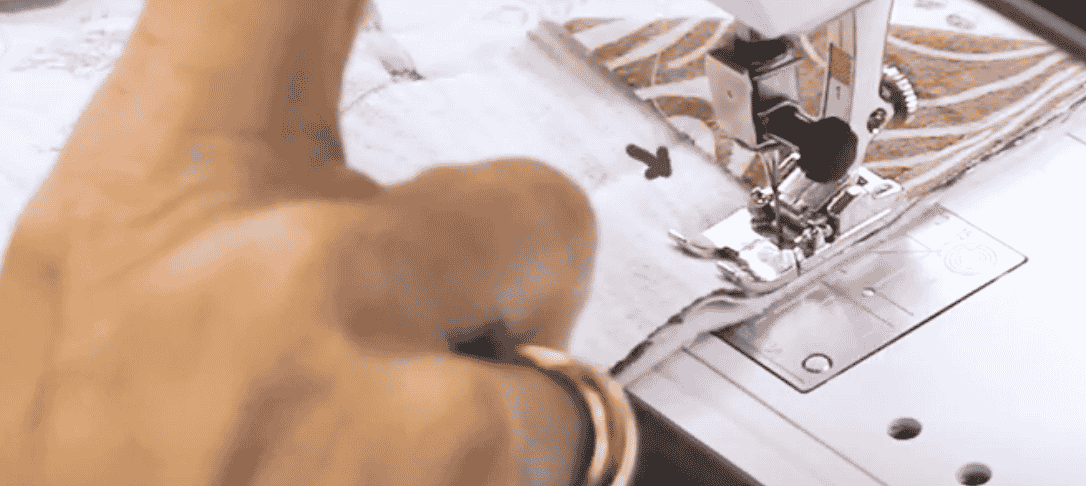
Snip your threads and take your quilt out of the machine. Now we’re going to fold over the binding back in half. Move your quilt about three to four inches down from where your stitching ended and start stitching your double fold binding down also with a ¼” seam allowance. That gap will create a nice pocket to tuck the tail into when you come back around.

At the corner of the quilt, we’re going to place a pin right where the quilt ends so we know where it is. Exactly ¼ of an inch away from the pin, we’re going to stop sewing. Back stitch to make sure your stitching doesn’t come out and take the quilt out of the machine.
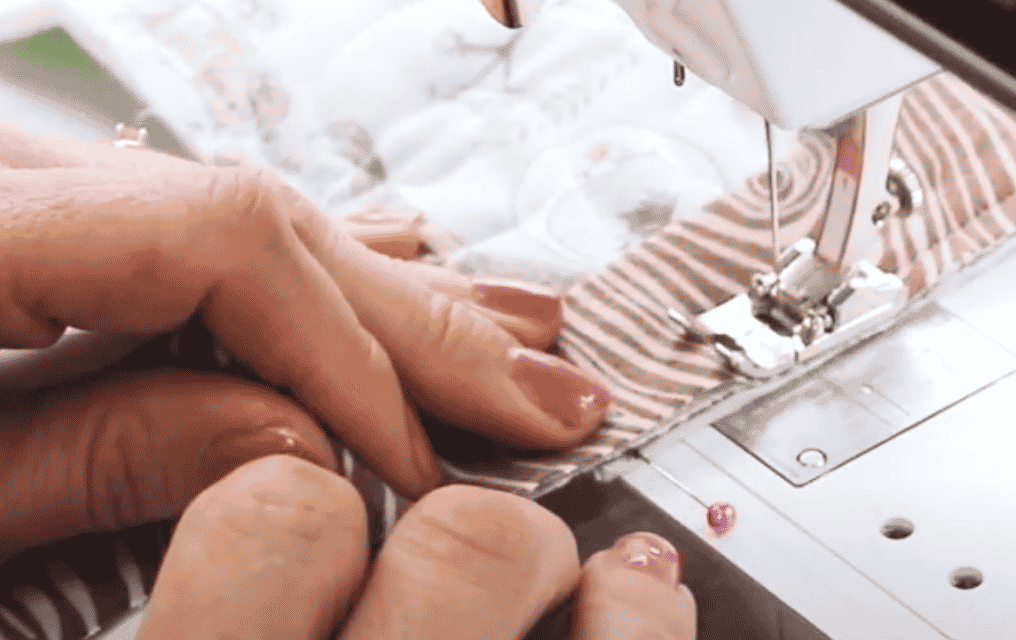
Finger press the binding into a right angle. Then fold it back down over itself to form a tidy corner like so. Make sure the edge of the binding is lined up with the edge of the quilt. We’ll use a pin to keep it from shifting.
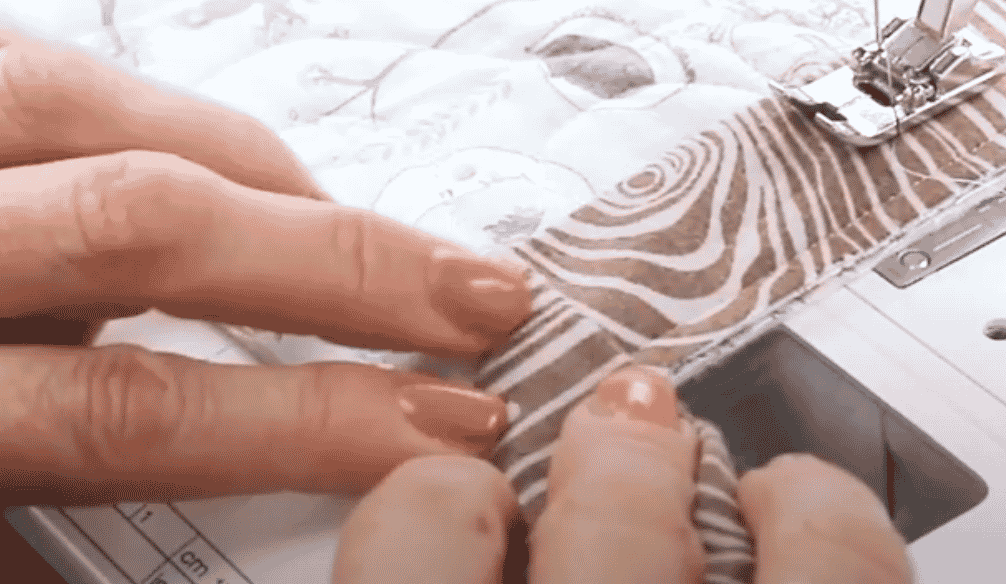

Put the quilt back in the machine and continue sewing at a ¼” seam allowance down the next edge. Continue doing this for the rest of the quilt.
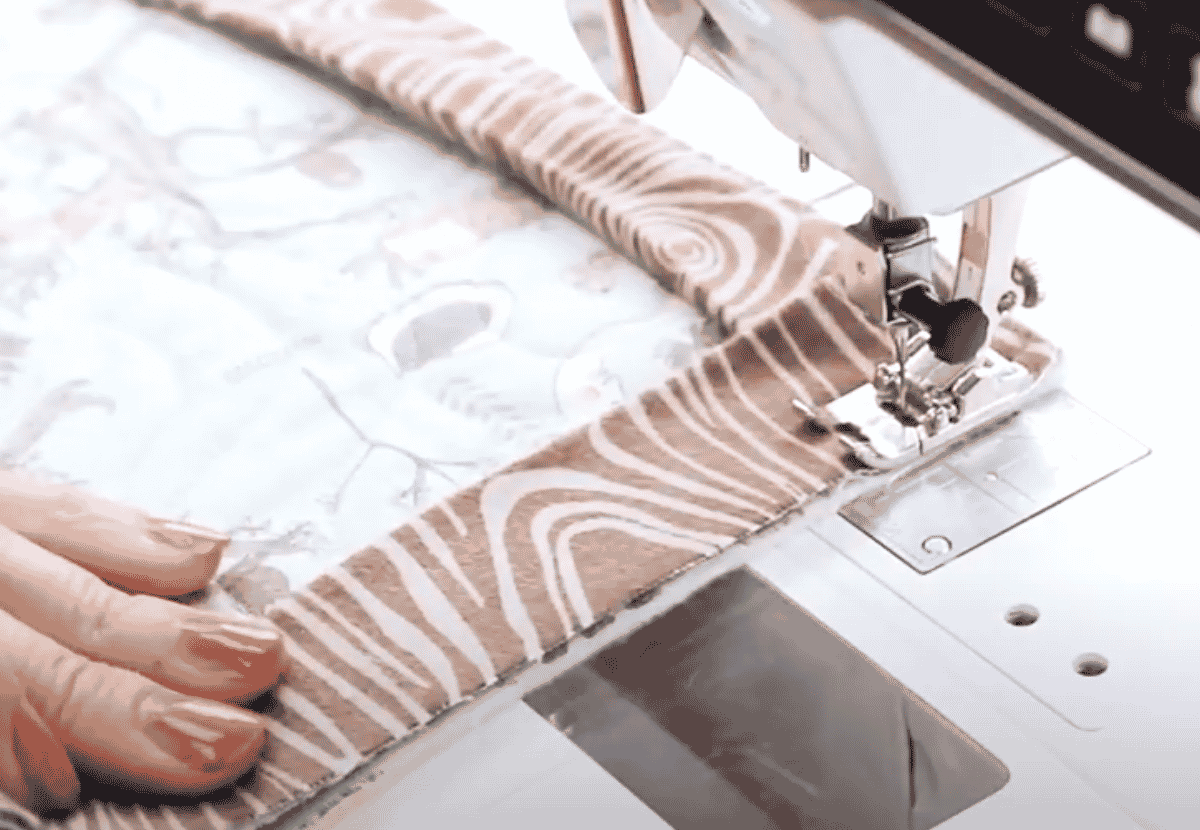
Now we’ve come back around to where we first started. We can now join the strips together. Since we have a lot of extra binding, we’ll need to trim some off, making sure that there’s still enough to completely fit inside the pocket we made, otherwise there will be a hole in the binding.
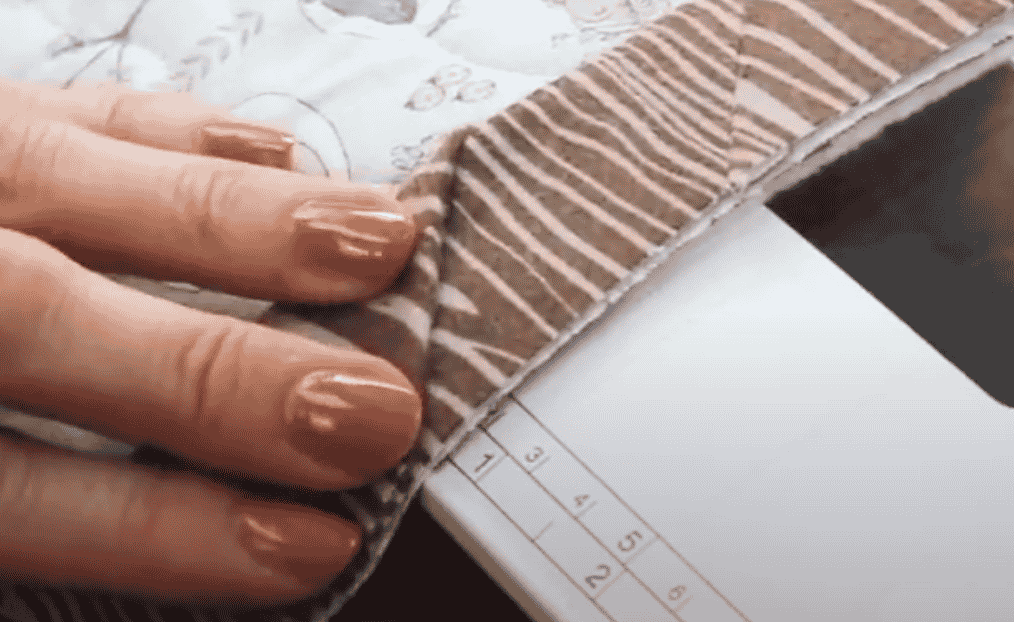
Tuck the trimmed end into the open pocket we made earlier with the diagonal piece folded around on top. Holding it place with your fingers, continue sewing down until you reach the starting stitches. Trim your threads and now you can see the binding is completely stitched to the back side of the quilt.
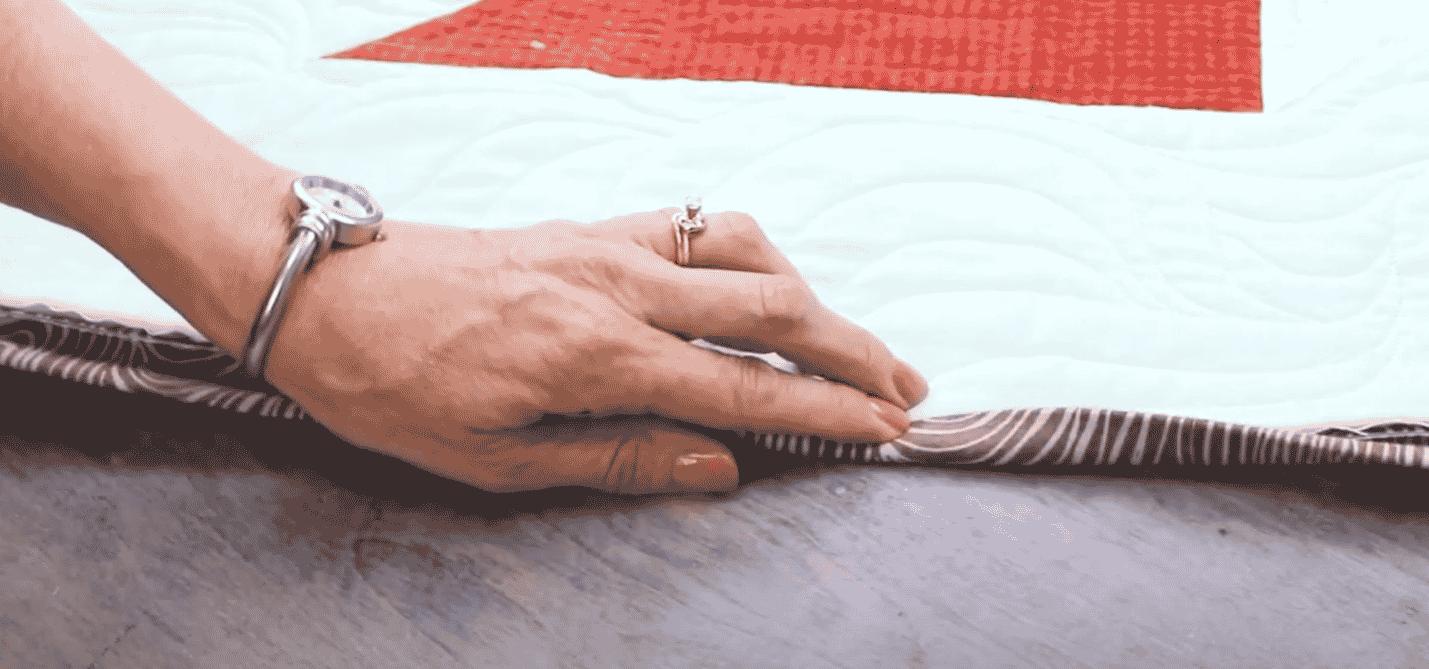
We can now focus on sewing the binding to the front of the quilt. Fold the binding around to the front and use the quilting clips to hold them in place.
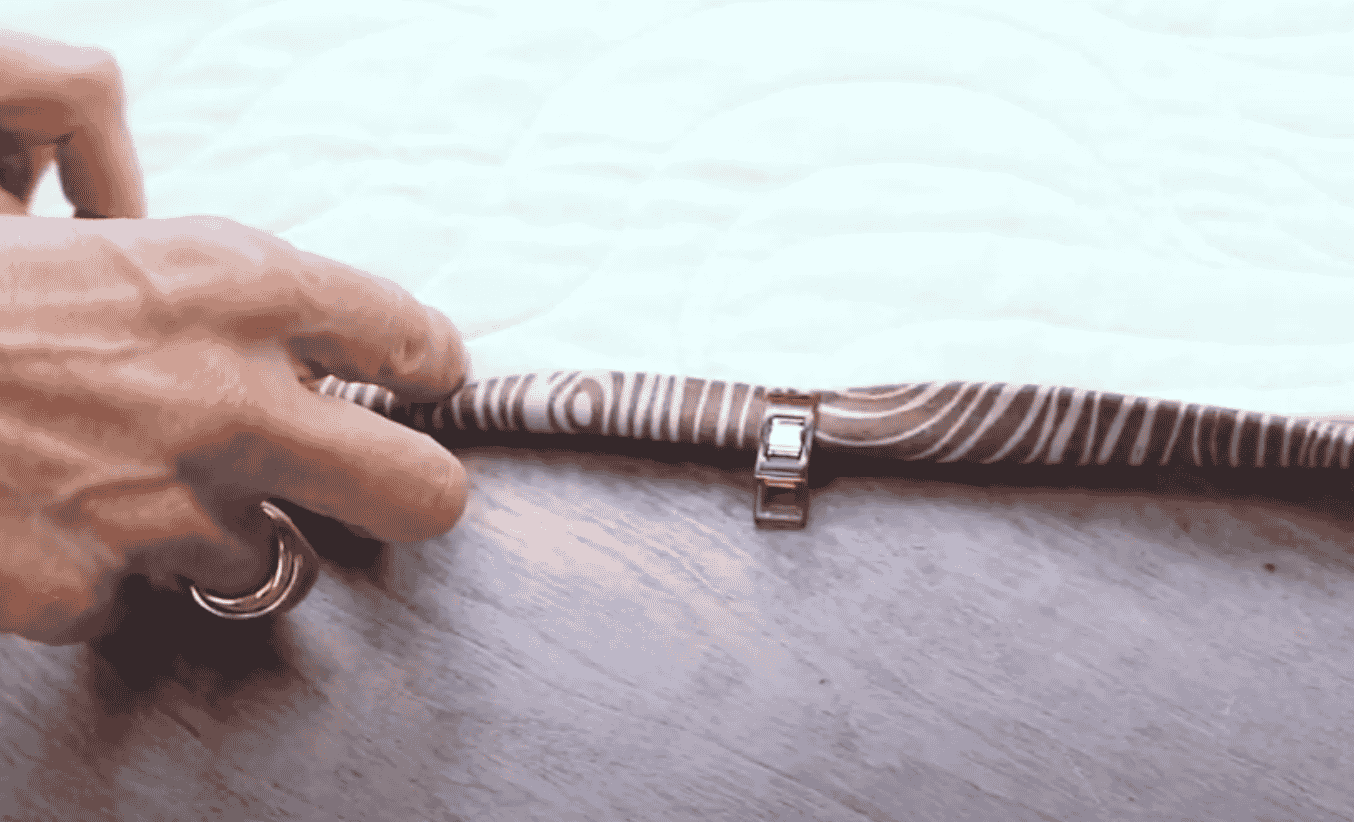
Just like on the other side, sew down with a ¼” seam allowance. You can start closer to the corner this time to hide your backstitch.

When you reach a corner, fold the next edge over to make a crisp diagonal mitered line and sew over it. Keep the needle down and pivot the quilt to the next edge, keeping in mind to stay at a ¼” seam allowance.
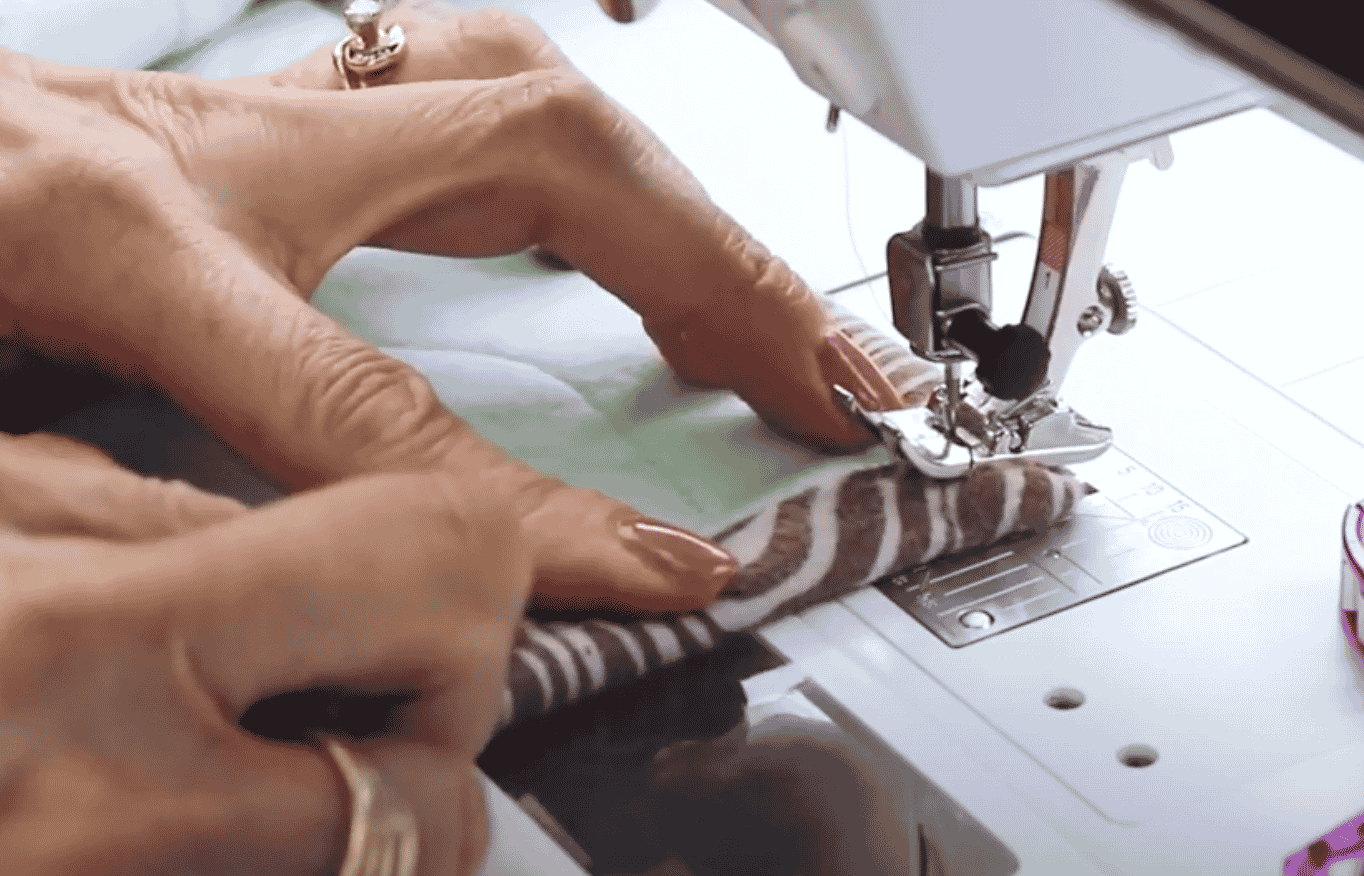
Continue sewing all around the quilt until you finish stitching it all down. There will be a small gap left where you started and ended your binding. If you wish, you can hand sew this down, however it’s up to you as we find that it doesn’t cause a problem to leave it like this.
And there we have it! One beautifully bound quilt.
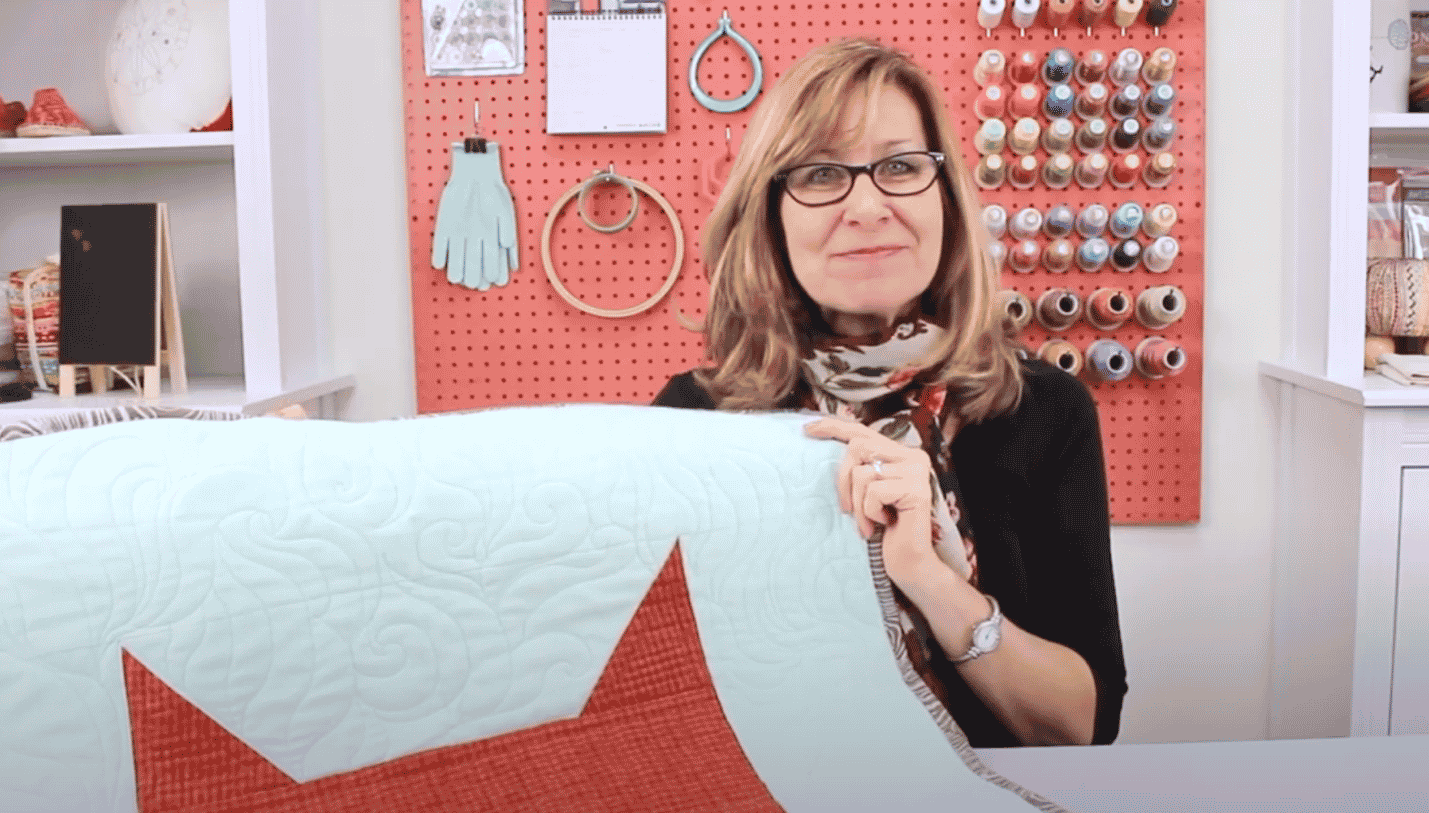
We hope this tutorial made it easier for you to bind your next quilt! Let us know in the comments if you learned something new.

